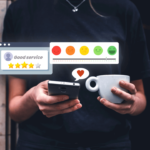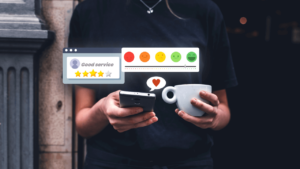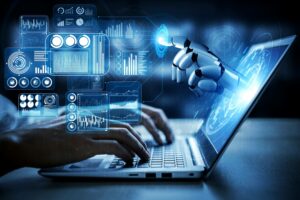
In recent years the world has grown increasingly unstable and uncertain, and the business landscape has naturally followed this trend, becoming destabilised as a result of various global disruptions. The COVID-19 pandemic, conflict in Ukraine, and worsening climate/energy crises have left their mark on the worldwide population, which itself continues to balloon; it is estimated that the world will reach a population of 8.5 billion people by 2023 (Winston 2019). Consequently, issues relating to urbanisation, transparency, sustainability, and of course advancing technologies are set to impact businesses heavily (Winston 2019).
Trends indicate that technologies such as Augmented (AR) Mixed (XR), and Virtual Reality (VR), and in particular Artificial Intelligence (ML) will play a significant role in shaping the world’s new business landscape, with the latter having already become more affordable and accessible than ever before within the last year (Winston 2019, Walsh 2021). Computational skills will no longer be optional due to the omnipresence of technology in both the workplace and at home. This future is not far off, but digital transformation can help businesses prepare for it in advance.
At present, it is possible for traditional mindsets in business leadership to succeed, but the advantages offered by modern technology put them at a significant disadvantage to those who have embraced digitalisation in their company. The benefits of adopting technology that enables social listening and greater insights into customer experience are unrivalled, but can only be effectively utilised if a digital framework is in place. A 2019 survey of 52 Dutch companies revealed that 84% of them embarked on a DT journey because of changes in customer expectations (Wolters Kluwer, 2019). As digital transformation becomes the norm, companies that fail to update their business model will find it near-impossible to compete in any market, whether it is pre-existing or newly emerging.
In order to facilitate digital transformation, a digitized shift in thinking is required. Adaptation to the digital world is one of the greatest challenges facing business leaders today, but there are measures that can be taken in order to ease this process. Full commitment is required on the part of both leadership and employees, although it is important to note that this does not mean ignoring core aspects of the business. Digital transformation is a process that benefits all facets of a company, even ones that were previously bound by traditional operating standards. Developed by Lindsey Herbert, the BUILD (Bridge, Uncover, Iterate, Leverage, Disseminate) model is one method that can be employed to ease the process of digital transformation. It involves:
- Bridging gaps of expectations and needs between customers and the company through research and engagement, and then using this knowledge as a foundation for digital transformation
- Uncovering barriers to the implementation of new technological procedures, and putting a plan in place to overcome them
- Iterating small but meaningful digitalisation changes in the order of most priority will result in a gradual but smoother digital transformation process
- Leveraging any advantage where possible by promoting the success of digital transformation throughout the company and motivating employees to adapt to changes
- Disseminating information and knowledge about new digital processes throughout the company and to customers will establish digital practices as the baseline of the business.
The prospect of digital transformation can be daunting, but methods like the BUILD model will ensure that currently successful business operations do not become ineffective and are enhanced instead. After a digital transformation is completed, the next phase is to ensure the newly introduced systems are continually supported – supporting a business that is in a future-ready state.
Sources
- Herbert, L., 2022. https://www.lindsayherbert.com. [Online] Available at: https://www.lindsayherbert.com
- Walsh, M., 2021. https://www.mike-walsh.com. [Online] Available at: https://www.mike-walsh.com/blog/10-new-rules-for-a-new-world
- Winston, A., 2019. https://sloanreview.mit.edu. [Online] Available at: https://sloanreview.mit.edu/article/the-world-in-2030-nine-megatrends-to-watch/
- Wolters Kluwer, 2019. https://www.wolterskluwer.com/. [Online] Available at: https://www.wolterskluwer.com/en/expert-insights/what-happens-after-digital-transformation



